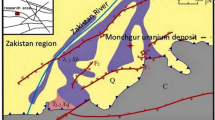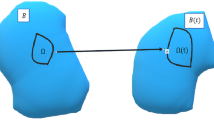Abstract.
Digital image processing is applied to X-ray element maps and back-scattered electron (BSE) images obtained with scanning electron microscopy-energy dispersive X-ray analysis (SEM-EDX), to quantify and identify salts and porosity with depth in porous media. Until now, only salt chemical composition with depth has been characterised and salt mineral composition inferred, so that no salt quantification was possible. The method we present can be used stand-alone or integrated with other techniques to fill certain gaps in our knowledge. It can be used to quantify texture and porosity of clay minerals, with implications in petroleum research. Also, salts may be identified and quantified with depth in porous media; this is important when selecting among salt extraction procedures in order to conserve cultural heritage. Finally, the method can help in interpreting salt weathering processes and links between stone decay forms at different scales, with consequences for geomorphology.
To demonstrate the method, salt and pore percentages with depth are determined in two limestone types from monuments in the Aunis province, SW France: i) Crazannes sparite, showing alveolisation and black crust, and ii) La Pallice micrite, suffering from micro-delamination. In most of the micrites no salts are identified. Porosity data show that micro-fissures are confined between the surface and 9 mm depth in LPAM5, the only micrite with loading salts with depth (NaCl = 1.9% at the surface versus 1.4% at 18 mm; and Na2SO4 · H2O and MgCl2 ∼ 0.02% in the first 3 mm). In the sparites, those samples with no crust display an alveolisation zone with lower porosity and higher diversity and percentage of salts. In CRZM6, the stone crust-alveolisation front lies at a depth of 9 mm. In the crust, porosity is lower than in the alveolisation zone (12%). Salt concentration, by contrast, is higher in the crust (2.91% versus 0.14% in the alveolisation zone).
Similar content being viewed by others
Author information
Authors and Affiliations
Additional information
Received September 1, 2000 Revision November 2, 2001
Rights and permissions
About this article
Cite this article
Cardell, C., Yebra, A. & Van Grieken, R. Applying Digital Image Processing to SEM-EDX and BSE Images to Determine and Quantify Porosity and Salts with Depth in Porous Media. Microchim Acta 140, 9–14 (2002). https://doi.org/10.1007/s006040200063
Issue Date:
DOI: https://doi.org/10.1007/s006040200063




